JFrog stock rises as Cantor Fitzgerald maintains Overweight rating after strong Q2
Introduction & Market Context
Amkor Technology Inc (NASDAQ:AMKR), a leading provider of semiconductor packaging and test services, presented its Q2 2025 financial results on July 28, 2025, showcasing a strong sequential recovery and promising outlook for the coming quarter. The company’s stock rose 2.27% in aftermarket trading to $21.64, building on a modest 0.33% gain during regular trading hours.
The semiconductor packaging specialist has been navigating a challenging market environment in recent quarters, with its Q1 2025 results showing signs of pressure. However, the Q2 presentation revealed significant sequential improvement across all business segments, suggesting a potential turning point in the company’s performance trajectory.
Quarterly Performance Highlights
Amkor reported Q2 2025 revenue of $1.51 billion, representing a 14% sequential increase from Q1’s $1.32 billion. The company delivered earnings per share of $0.22, more than doubling the $0.09 reported in the previous quarter. Notably, all end markets achieved double-digit sequential growth, indicating broad-based improvement across Amkor’s business portfolio.
As shown in the following quarterly highlights slide:

The company’s gross profit reached $182 million with a 12.0% margin, while operating income stood at $92 million with a 6.1% margin. These figures represent significant improvements from Q1 2025’s gross profit of $158 million (11.9% margin) and operating income of $32 million (2.4% margin).
A more detailed breakdown of the financial results demonstrates the company’s sequential improvement:
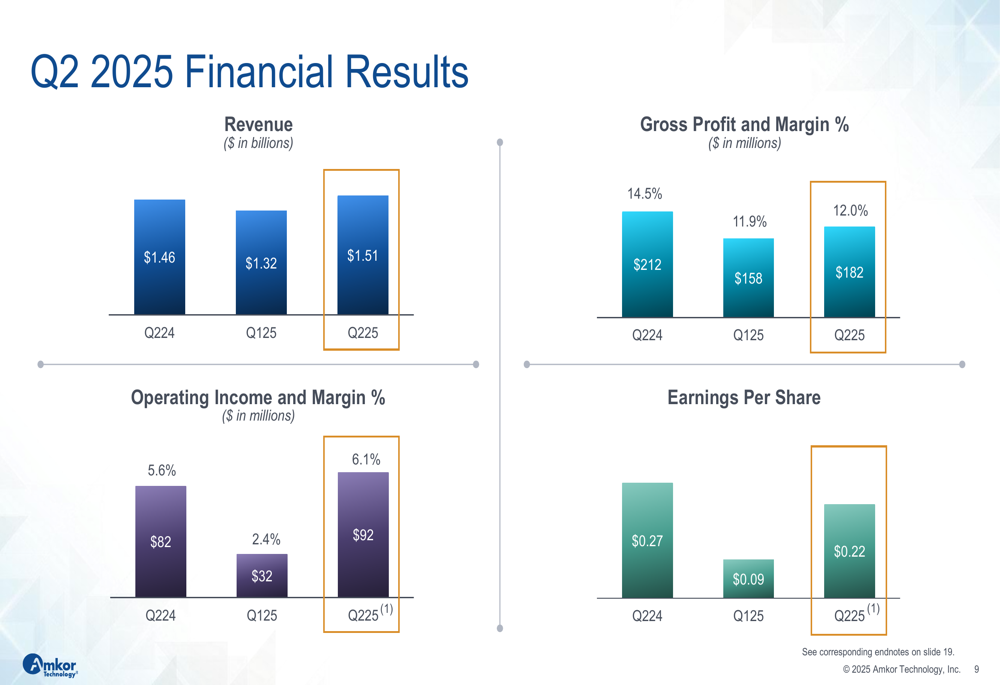
End Market Performance
Amkor’s performance was strong across all four of its key end markets, with each segment posting double-digit sequential growth. The communications segment, which includes smartphone components, led with 15% sequential growth, driven primarily by the iOS ecosystem. Management noted that future device needs for edge AI are currently under assessment, suggesting potential growth opportunities.
The computing segment showed the strongest performance with 16% sequential growth, supported by new product ramps in personal computing and the launch of Amkor’s first High-Density Fan-Out product. The automotive and industrial segment grew 11% sequentially, while the consumer segment matched computing’s 16% growth rate, benefiting from market share gains in wearables.
The following slide details the performance across these end markets:
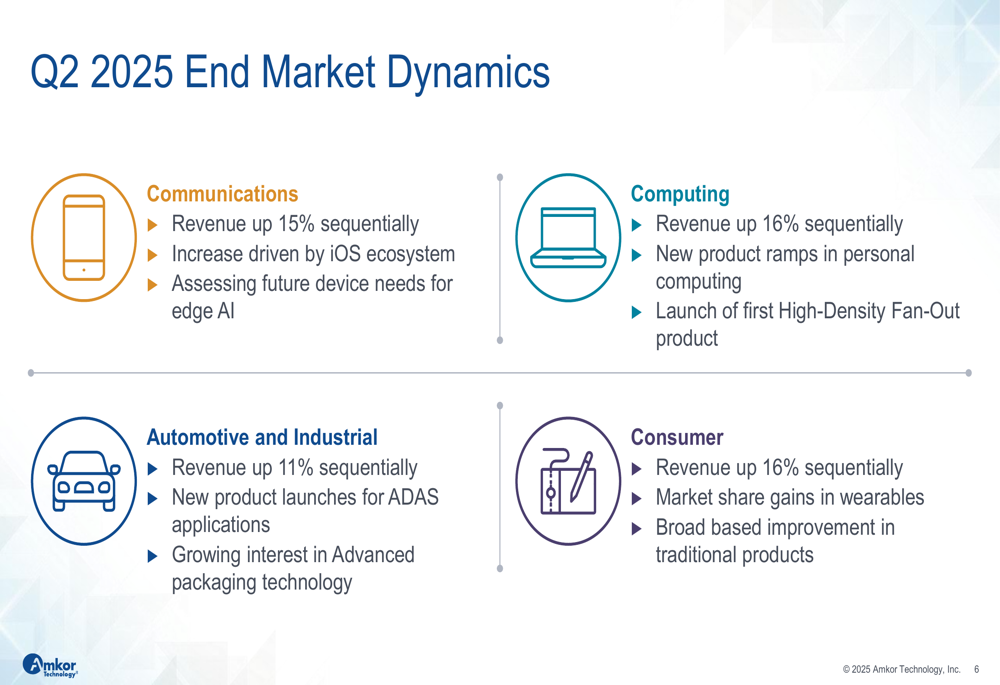
Strategic Initiatives
During the presentation, CEO Giel Rutten emphasized Amkor’s long-term strategy focused on three key pillars: strengthening technology leadership, expanding geographic footprint, and partnering with lead customers in growth markets. The company is particularly focused on delivering next-generation solutions for high-performance computing (HPC) and artificial intelligence applications.
Strategic initiatives include expanding Amkor’s presence in the HPC and AI markets, offering advanced technologies supporting High-Density Fan-Out (HDFO), flip chip, and System-in-Package (SiP) solutions, and investing in next-generation technologies to support customer roadmaps. The company is also expanding its turnkey test capabilities in Korea.
As illustrated in the company’s strategic execution slide:
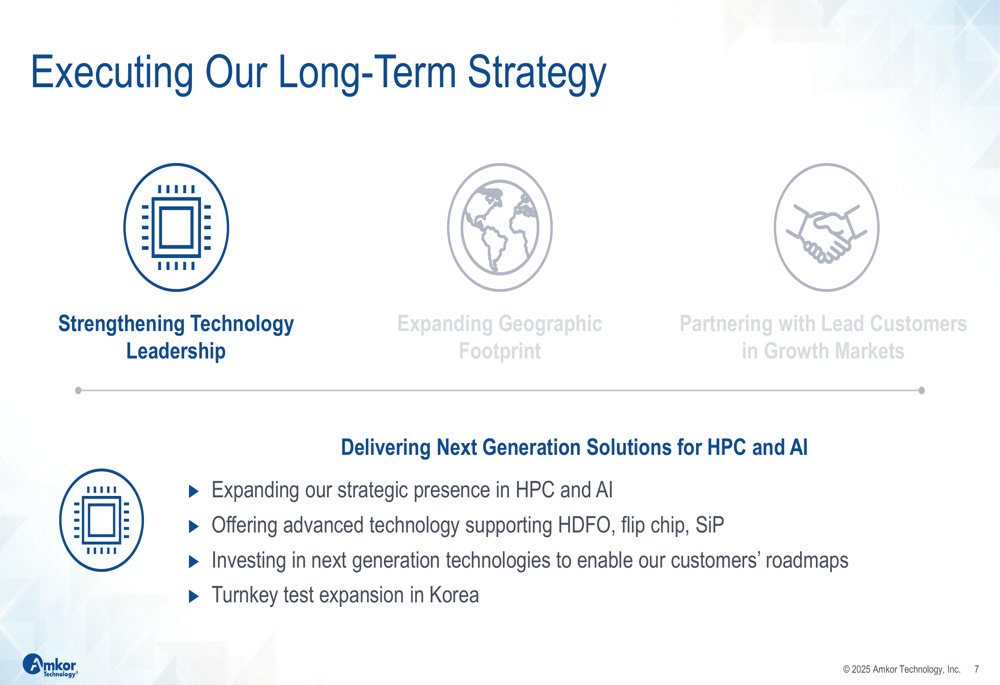
Financial Analysis
Amkor’s financial position remains solid, with $2.0 billion in cash and short-term investments and total liquidity of $3.1 billion as of Q2 2025. The company reported total debt of $1.6 billion, maintaining a debt-to-EBITDA ratio of 1.5x, which aligns with its target of keeping this ratio at or below 1.5x.
Q2 EBITDA reached $259 million with an EBITDA margin of 17.1%, representing a significant improvement from Q1’s $197 million EBITDA and 14.9% margin reported in the previous earnings release.
The following slide highlights Amkor’s financial strength metrics:
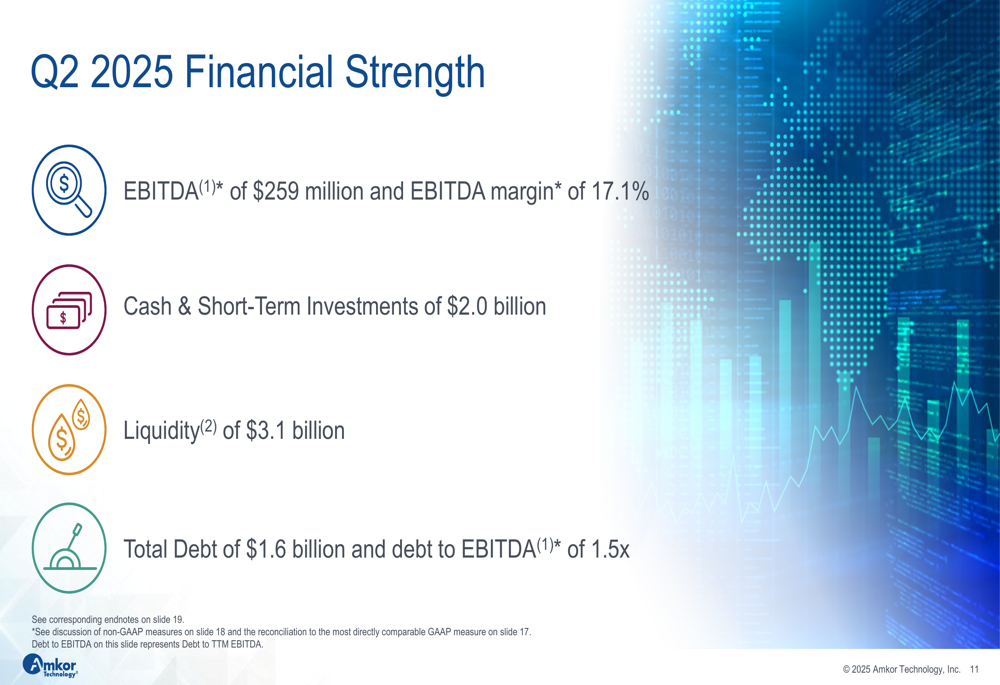
Forward Guidance
Looking ahead to Q3 2025, Amkor provided an optimistic outlook with revenue expected to reach between $1.875 billion and $1.975 billion, representing a substantial 27% sequential increase at the midpoint. The company also projects improved profitability, with gross margin expected to range from 13.0% to 14.5%, net income between $85 million and $120 million, and diluted EPS of $0.34 to $0.48.
The company maintained its 2025 capital expenditure guidance at $850 million, indicating continued investment in growth initiatives despite recent market challenges.
As shown in the Q3 guidance slide:
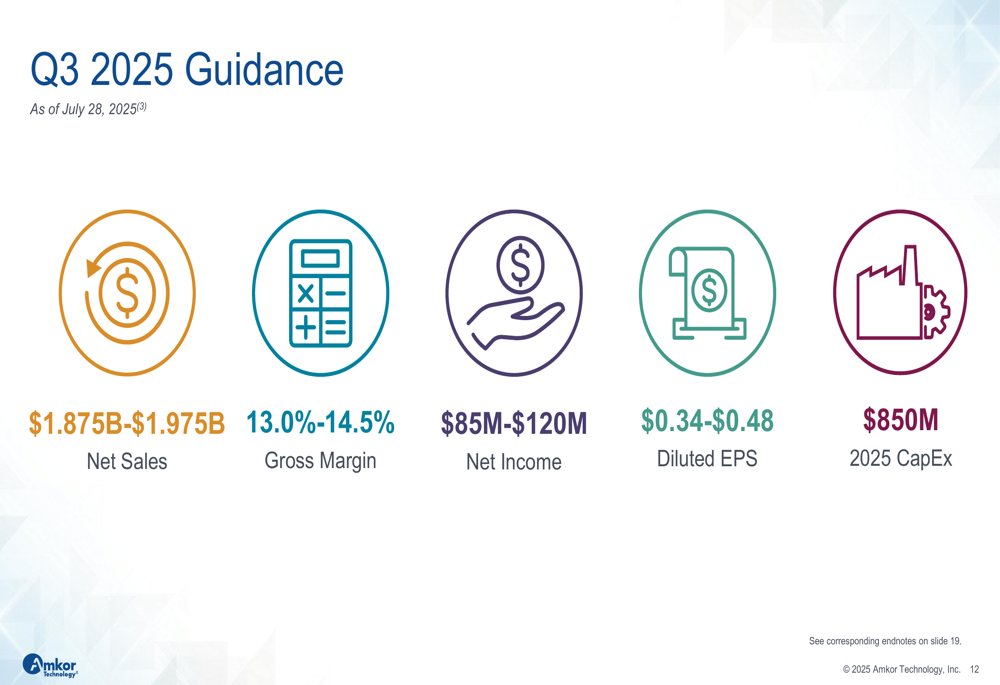
Capital Allocation Strategy
CFO Megan Faust outlined Amkor’s balanced and disciplined capital allocation strategy during the presentation. The approach focuses on four key areas: investing in organic growth, making strategic investments, maintaining balance sheet strength and flexibility, and providing shareholder returns.
The company aims to return 40%-50% of free cash flow to shareholders over time and plans to continue growing its regular quarterly dividend. From a balance sheet perspective, Amkor is committed to maintaining its debt-to-EBITDA ratio at or below 1.5x while preserving strong liquidity for maximum financial flexibility.
The capital allocation strategy is detailed in the following slide:
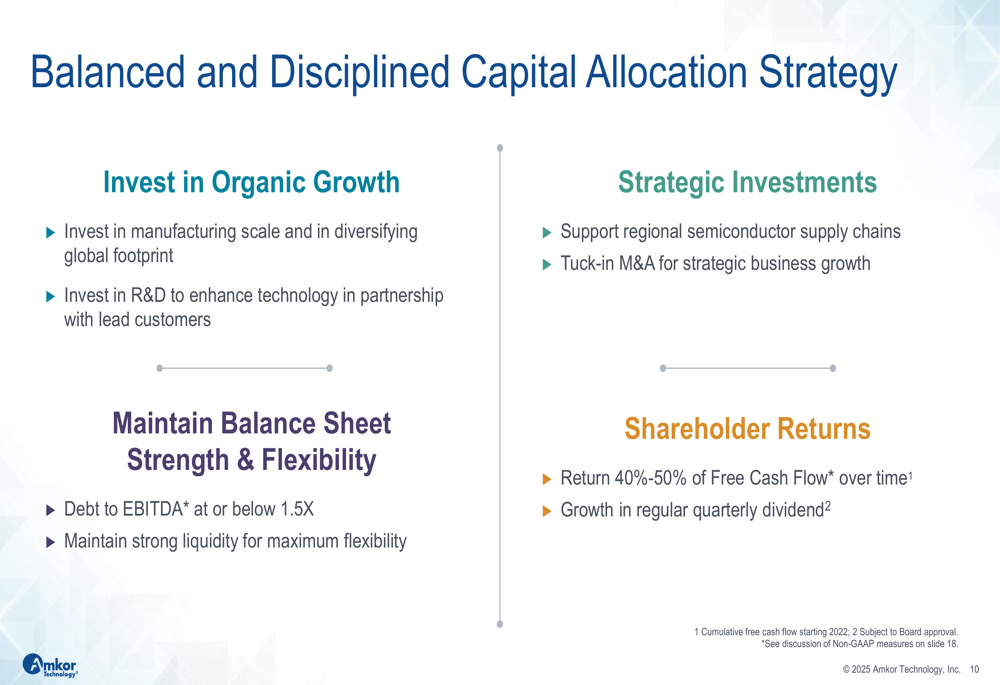
Market Reaction and Outlook
Amkor’s stock responded positively to the Q2 results and Q3 outlook, rising 2.27% in aftermarket trading. This builds on the company’s recent momentum, with the stock trading at $21.64 after hours, well above its 52-week low of $14.03 but still significantly below its 52-week high of $38.89.
The sequential improvement across all metrics and the strong Q3 guidance suggest that Amkor may be entering a recovery phase after a challenging period. The company’s strategic focus on advanced packaging technologies for high-growth areas like AI and high-performance computing positions it well to capitalize on these expanding markets, though execution will be key to realizing this potential.
As the semiconductor industry continues to navigate supply chain challenges and evolving market demands, Amkor’s diversified end market exposure and global manufacturing footprint provide important competitive advantages that could support sustained growth in the coming quarters.
Full presentation:
This article was generated with the support of AI and reviewed by an editor. For more information see our T&C.
